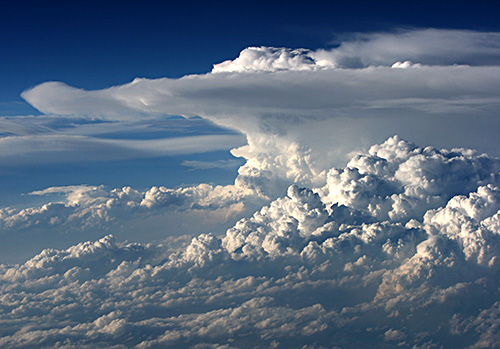Introduction to Clouds
We see clouds almost daily, yet they are complicated and varied. In fact, the simple presence of a cloud tells us little about the weather without learning more details.
We see clouds almost daily, yet they are complicated and varied. In fact, the simple presence of a cloud tells us little about the weather without learning more details.
Clouds are the visible aggregate of minute particles of water and/or ice that form when water vapor condenses in the atmosphere.
Clouds can grow very tall or appear flat as a pancake. They are typically white in color but can also be different shades of gray or brilliant yellow, orange, or red. They can weigh tens of millions of tons yet float in the atmosphere.
Clouds can be harbingers of good weather or bad. Their absence can be a good thing after a flooding rain or a bad thing during a drought. They provide relief from the heat of direct sunlight but also trap warmth, leading to higher temperatures.
Precipitation from clouds helps crops to grow but can reduce visibility and make travel dangerous.
They come in infinite shapes and sizes yet we often recognize more familiar objects or animals.
Clouds can be carried along by winds of up to 150 mph (240 km/h) or can remain stationary while the wind passes through them.
They can form behind high flying aircraft or can dissipate as a plane flies through them.
They are not confined to Earth but are found on other planets as well.
Learn about clouds and how they form to become "Cloudwise".



